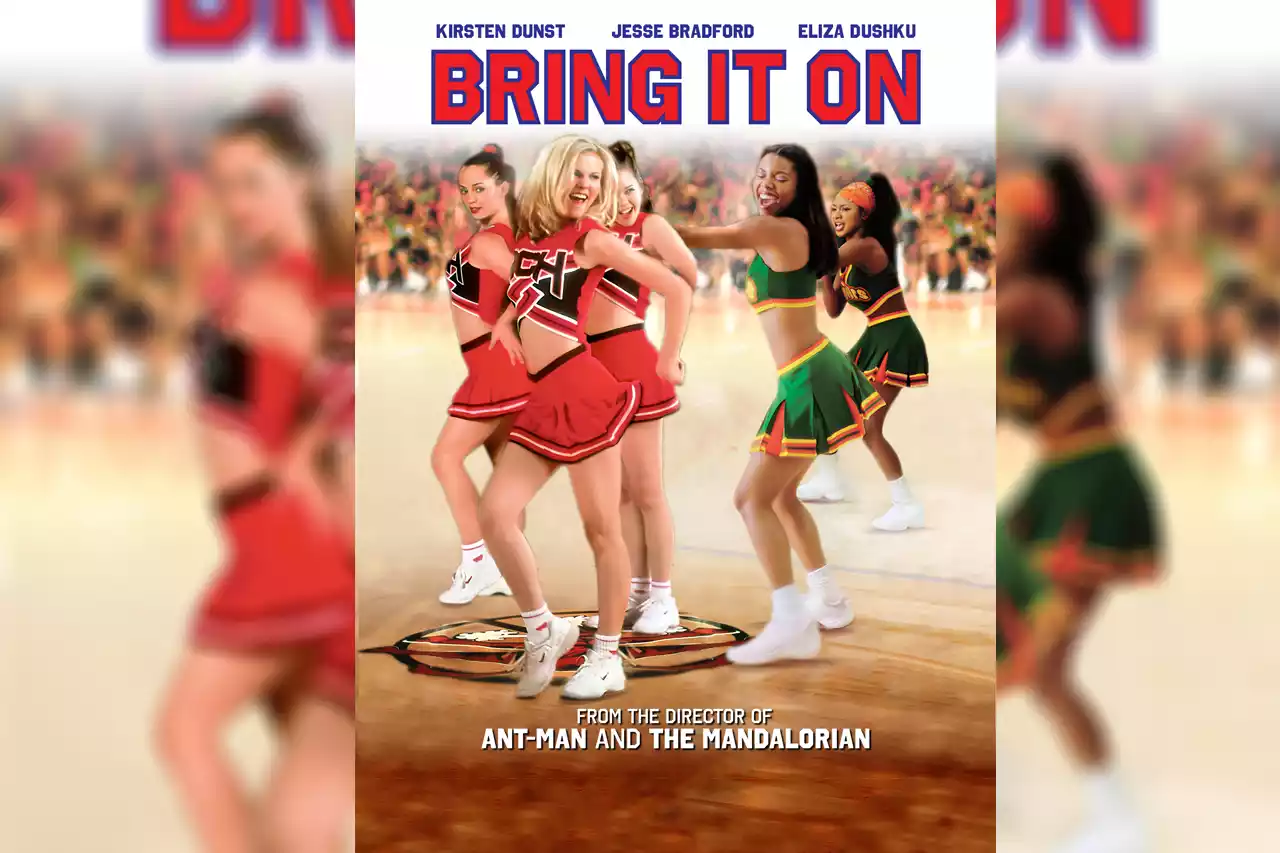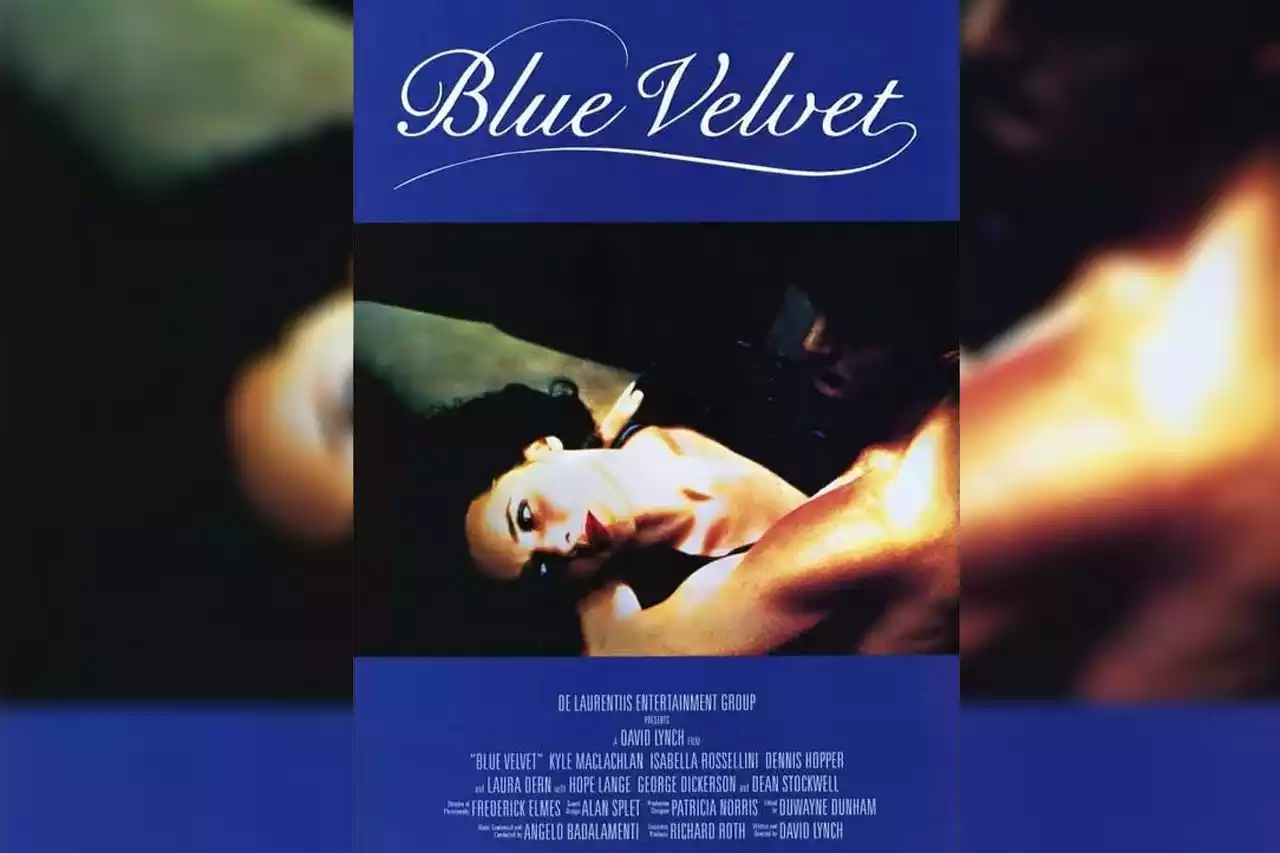Entertainment
Singer Jelly Roll Drops & Shatters His New Artist of the Year Trophy at the 2023 CMA Awards

Hey everyone, guess what Jelly Roll did at the CMA Awards this year? He totally smashed two things: everyone’s expectations and, oops, his brand-new artist of the year trophy. So, here’s the scoop from a tweet by ABC’s On the Red Carpet, which Jelly Roll – the guy behind “Son of a Sinner” – shared himself. The scene? The 39-year-old country music sensation was just getting to know his shiny glass trophy when, in a classic clumsy moment, it slipped right out of his hands and shattered all over the floor. This all went down at the Bridgestone Arena in Nashville during the Wednesday (Nov. 8) ceremony. But hey, no sweat, Jelly Roll’s getting a do-over trophy.
The country star totally dropped his award, but don’t worry – turns out the trophies they use backstage are just for show, since no one knows who’s gonna win in advance. No sweat though, Jelly Roll’s real trophy will be on its way to him soon! 🏆✨
Guess who dropped and broke his best new artist #CMAawards? Yes, @JellyRoll615 but don’t worry, he will get a replacement. #JellyRoll pic.twitter.com/Mlic2zGws3
— On The Red Carpet (@OnTheRedCarpet) November 9, 2023
Picture this: he’s up there, super emotional and totally inspiring, giving his fans this heartfelt speech. He drops some serious wisdom, saying, “There’s something poetic about a 39-year-old man winning new artist of the year. I don’t know where you’re at in your life or what you’re going through, but I want toa tell you to keep going, baby.”
He’s not done yet, though. He amps up the volume and goes, “I want to tell you, ‘Success is on the other side.’ I want to tell you, ‘It’s going to be OK!’ I want to tell you that the windshield is bigger than the rearview mirror for a reason, because what’s in front of you is so much more important than what’s behind you!”
Talk about a mic-drop moment!
Entertainment
Joanna Newsom’s Ys: Discover the Enchanting World of This Hidden Gem Album You’ve Been Missing

If you’ve ever wished you could stumble upon a magical, hidden world filled with whimsical stories and dreamy sounds, you’re in luck. Joanna Newsom’s album Ys is exactly that: an enchanting musical adventure you’ve probably never heard of—but totally should! While it may not be mainstream, this hidden gem is perfect for when you’re ready to discover something that feels like stepping into a secret, fairytale-like universe. Ready to dive in? Let’s go!
Who is Joanna Newsom?
Joanna Newsom might not be a name you recognize yet, but trust us, she’s an indie music queen in her own right. Imagine a singer, songwriter, and harpist (yes, harpist—how cool is that?) all wrapped into one, and you’ve got Joanna. Her music is often labeled as folk but before you roll your eyes and think of your grandpa’s record collection—wait. Just because she’s considered a folk artist doesn’t mean she has anything in common with geezers like Joni Mitchell or that sometimes-creepy guy Bob Dylan. Joanna Newsom’s music is fresh, whimsical, and completely unique.
Her voice? Quirky, high-pitched, and full of emotion. Her lyrics? Like reading the most poetic storybook ever. And with her album Ys, she took things to a whole new level by teaming up with a legendary composer to create something that feels like stepping into a dreamy soundtrack. So, if you’re looking for something different—and way more magical than anything on the charts—Joanna Newsom is about to be your new fave.
What Makes Ys Special?
Now, let’s talk about Ys, the album you never knew you needed. First off, this is not your average playlist of quick-hit bangers. Nope, Ys is an experience. Each of the five songs on this album takes you on a journey, like a musical adventure filled with storytelling, emotions, and rich orchestral sounds that make you feel like you’ve entered another world.
Every song on Ys is long and intricate, but don’t let that scare you! It’s like watching a really good movie—you get pulled into the story and don’t want it to end. Joanna weaves fairytale-like lyrics with deep emotions, so each track feels like its own little universe. Whether she’s singing about relationships, nature, or mythical characters, there’s something captivating in every note. It’s basically an album that turns music into magic.
Song Highlights You’ll Love
Now, let’s break down a few songs that’ll get you hooked:
Emily
This epic opener feels like a love letter to Joanna’s sister but with some beautiful celestial imagery thrown in. It’s personal and poetic—perfect for a late-night listen when you’re feeling all the feels.
Monkey & Bear
Get ready for a fable-like story about a bear and a monkey trying to escape their life of captivity. It’s like a dark fairytale with a catchy twist, and if you love animated movies with deeper meanings (hint: Animal allegories), this one’s for you.
Sawdust & Diamonds
This one is an emotional rollercoaster. It’s just Joanna and her harp, pouring her heart out in a way that feels both raw and magical. You’ll feel like you’re watching someone create art right in front of your eyes (or ears, in this case).
Only Skin
Okay, this track is long—like, really long. But it’s filled with so many twists, turns, and breathtaking moments that it’s totally worth the journey. It’s basically the fantasy novel of songs, and you’ll get lost in its beauty.
Cosmia
This song closes out the album in a dreamy, haunting way. It’s one of those tracks that sticks with you long after the last note fades.
Why Ys is the Perfect Album for When You Need to Escape
Feeling overwhelmed by life, school, or social media? Ys is like a mini-vacation for your mind. Joanna’s voice and the lush, orchestral arrangements make you feel like you’ve stepped into a world far away from the everyday hustle. Whether you’re doing homework, taking a break, or just daydreaming about magical places, Ys is the perfect soundtrack to transport you to a world where you can forget about everything and just be.
Plus, it’s a nice break from the short, snappy songs that fill our playlists. Sometimes, it’s nice to just *sit* with a piece of music and let it take you on a journey—and *Ys* does just that.
How to Enjoy *Ys* Without Feeling Overwhelmed
If the idea of five long, intricate songs feels a little intimidating, don’t stress! Here’s a tip: listen in parts. You don’t have to sit down and absorb the entire album in one go. Start with a single track—maybe *Emily* or *Monkey & Bear*—and just let it play while you’re relaxing. You can always come back to the rest later when you’re ready for more.
It’s also totally okay if you don’t “get” everything right away. The beauty of *Ys* is that it reveals itself in layers. The more you listen, the more you’ll discover in the lyrics and melodies. So take your time, and don’t worry if it feels a bit different from your usual music—it’s all part of the magic.
A Few Fun Facts About Ys That Will Make You Love It More
Want to know something cool? The album’s orchestral arrangements were done by Van Dyke Parks, a legendary composer who’s worked with some of the biggest names in music. The cover art? It’s as dreamy and detailed as the music itself, with a fairytale-like illustration that captures the album’s vibe perfectly.
And Joanna’s voice? It’s quirky, and some might even call it odd, but that’s exactly what makes her stand out from the crowd. She’s not afraid to be different—and that’s why we love her.
Bottom Line: Why Ys Deserves a Spot on Your Playlist
So, why give Ys a shot? Because it’s like discovering a hidden world full of magic, emotion, and beauty—all wrapped up in a musical package. It might take a little time to get into, but once you do, you’ll wonder how you ever missed this hidden gem. Next time it’s raining outside or you’re in need of some chill vibes, put on Ys and let Joanna Newsom take you somewhere truly special. You might just find your new favorite album for those quiet, dreamy nights.
Entertainment
Movie Review: Bring it On

Hey there, movie buffs! 🎥 Are you ready to revisit a classic that’s all about high energy, sass, and cheerleading showdowns? Let’s talk about “Bring It On” (2000), a movie that’s been flipping and jumping in our hearts for over two decades! Is it still the pop-culture cheerleader we remember, or has it lost its sparkle? Let’s dive in!
The Storyline – A Cheerful Ride!
First things first, let’s recall the plot! “Bring It On” stars Kirsten Dunst as Torrance Shipman, the newly-appointed captain of the Rancho Carne High School cheerleading squad, the Toros. She’s peppy, she’s driven, and she’s determined to lead her team to their sixth consecutive national title. But there’s a twist – their perfect routines were stolen from the East Compton Clovers, a talented squad led by the fierce Isis (played by Gabrielle Union). The movie takes us on a spirited journey filled with competition, friendship, and self-discovery.
Does It Still Hold Up?
So, the big question – does “Bring It On” still hold up after all these years? Absolutely! It’s like opening a time capsule to the year 2000, filled with early-aughts fashion, catchy cheers, and a whole lot of attitude. The humor? Still hilarious. The performances? Totally on point. It’s a nostalgia trip that feels fresh even today.
Why It’s Still a Gem
What makes “Bring It On” so endearing after all these years is its timeless themes. It’s about more than just cheerleading; it’s about integrity, friendship, and respecting your competition. Torrance’s journey towards understanding the importance of originality and hard work resonates just as strongly today. And let’s not forget the dynamic between the Toros and the Clovers, showcasing rivalry with respect and admiration.
For the Laughs and the Cheers
If you’re in for a good laugh, “Bring It On” has got you covered. The witty one-liners and hilarious scenarios are a big win. And the cheer routines? They’re as energetic and impressive as ever. Whether you’re a cheer enthusiast or just love a good comedy, this movie has something for everyone.
Who Will Love It?
This movie is a perfect pick for a girls’ night in, especially if you’re into early 2000s nostalgia. It’s also great for those who appreciate a good sports film with a twist. And let’s not forget the younger crowd who might be watching it for the first time – they’re in for a treat!
The Impact and Legacy
It’s not just about the laughs and cheers; “Bring It On” has left a lasting impact on pop culture. It’s a movie that sparked a whole series of sequels and even a musical. The film’s portrayal of competitive cheerleading helped popularize the sport and brought it into mainstream media. It’s a testament to how a fun, lighthearted movie can leave a lasting impression.
The Cast – Then and Now
Part of the fun in rewatching “Bring It On” is seeing actors like Kirsten Dunst and Gabrielle Union in their early roles. They brought such energy and charisma to their characters, setting the stage for their successful careers. Watching it now, it’s a delightful throwback and a reminder of where these talented actors started.
Soundtrack – Still Bopping!
Let’s not forget the soundtrack! With its mix of pop and rock, the “Bring It On” soundtrack is as catchy today as it was back then. It’s a perfect backdrop to the high-energy cheer routines and adds an extra layer of fun to the movie.
Style & Fashion – Early 2000s Galore
Fashion alert! The early 2000s style in “Bring It On” is a blast from the past. From the cheer uniforms to the casual outfits, it’s a nostalgic journey through the trends of the time. It’s a fun, visual representation of the era, adding to the movie’s charm.
Bottom Line – A Must-Watch!
In conclusion, “Bring It On” is more than just a cheerleading movie; it’s a pop-culture staple that has stood the test of time. With its blend of humor, heart, and high-flying cheer stunts, it’s a film that continues to entertain and inspire. So grab your pom-poms, gather your squad, and get ready to cheer on this timeless classic!
Rating: 🎉🎉🎉🎉 (4 out of 5 party poppers)
Till next movie night, Kelly.
Entertainment
Blue Velvet: Unraveling the Mystery!

A Dark Underworld in Lumberton
Set in the seemingly idyllic town of Lumberton, Blue Velvet follows the story of Jeffrey Beaumont (Kyle MacLachlan), who stumbles upon a severed ear in a field. Yep, you read that right – an ear! This discovery catapults him into a dark underworld lurking beneath Lumberton’s white-picket fence surface. Enter the enigmatic lounge singer, Dorothy Vallens (Isabella Rossellini), and the menacing Frank Booth (Dennis Hopper), who will give you all the creepy vibes you can handle!
Is It Too Creepy, or Just Perfect?
Now, let’s get real – this movie isn’t for the faint of heart. It’s classic Lynch, mixing dream-like sequences with harsh reality, and yes, it gets super creepy. But that’s the beauty of it! It’s a wild ride that challenges your perception of good and evil, reality and illusion. The big question is, can you handle it? 🤔
Performances and Lynch’s Signature Style
For those of you who love a good psychological thriller, Blue Velvet is a masterpiece. The way Lynch plays with themes of innocence and corruption is nothing short of genius. And let’s not forget the amazing performances. Kyle MacLachlan is perfect as the boy-next-door turned amateur detective, while Isabella Rossellini’s portrayal of the tormented Dorothy is both haunting and heart-wrenching.
The Lynchian Universe: From Lumberton to Twin Peaks
But where does Blue Velvet fit in the grand scheme of Lynch’s work? Think of it as a stepping stone to his later works like Twin Peaks and Mulholland Drive. It’s got all the Lynch trademarks – eerie settings, a haunting soundtrack, and that surreal, dream-like quality that makes you question everything.
Visual Aesthetics and Symbolism
Let’s chat a bit more about the vibes in Blue Velvet. If you’re into aesthetics, this movie is a visual feast. The contrast between the bright, picturesque town and the dark, twisted underworld is visually stunning. The cinematography is top-notch, creating a mood that’s both dreamy and nightmarish. And the soundtrack? It’s classic Lynch – eerie, atmospheric, and totally mesmerizing.
For those who dig a little deeper, there’s a ton of symbolism and hidden meanings in Blue Velvet. It’s like a puzzle waiting to be solved. Every scene, every line of dialogue, and every character has a purpose. It’s a film that encourages multiple viewings, and trust me, you’ll want to watch it more than once to catch all the nuances.
Lumberton and Twin Peaks: A Cinematic Connection
Now, let’s talk about something intriguing – could the setting of Blue Velvet, the quaint town of Lumberton, be a low-key prelude to Lynch’s iconic TV series, Twin Peaks? The similarities are definitely there. Both Lumberton and Twin Peaks are small, seemingly innocent towns with dark, twisted secrets lurking beneath the surface. The way Lynch portrays these towns makes you question what’s really going on behind closed doors in small-town America.
The atmosphere in both Blue Velvet and Twin Peaks is eerily similar. They both have this blend of Americana with a surreal, dream-like quality that’s quintessentially Lynch. It’s almost like Lumberton was a testing ground for the ideas and themes that would later be fully realized in Twin Peaks. The exploration of the duality of human nature, the blend of the mundane with the bizarre, and the examination of the darkness hiding in plain sight – all these elements in Blue Velvet feel like a precursor to the larger canvas of Twin Peaks.
Final Thoughts
Overall, Blue Velvet is a cinematic gem that’s both timeless and groundbreaking. It’s a film that defies conventional storytelling and takes you on a journey that’s unforgettable. So, if you’re looking for a movie that’s out of the ordinary, this is it. Remember, in the world of David Lynch, expect the unexpected!
In conclusion, Blue Velvet is a Lynchian masterpiece that’s equal parts disturbing and captivating. It’s perfect for those who love to delve into the darker side of cinema and appreciate films that make you think. This is one movie that truly stands the test of time and showcases Lynch’s unique vision. So grab some popcorn, keep an open mind, and dive into the enigmatic world of Blue Velvet!
Rating: 👂🏻👂🏻👂🏻👂🏻👂🏻 (5 out of 5 severed ears)
Till next movie night, Kelly.
-

 Fashion1 year ago
Fashion1 year agoTen Edgy Office Looks 🔥👠
-

 Beauty2 years ago
Beauty2 years agoGel vs. Acrylic: Which Manicure Type Suits You Best? 💅
-

 Fashion2 years ago
Fashion2 years agoPerfume: A Shy Student’s BFF 🌸
-

 Success Tips1 year ago
Success Tips1 year agoDecoding the Tinder Algorithm: How to Increase Your Visibility and Matches
-

 Health2 years ago
Health2 years agoDo Waist Trainers Actually Work?
-

 Relationships1 year ago
Relationships1 year agoPressing Pause: Stopping Physical Intimacy Inside a Relationship 🚫❤️🔥
-

 Relationships1 year ago
Relationships1 year agoWhoops I kissed my BFF 💋
-

 Health2 years ago
Health2 years ago7 Yoga Poses for Enhancing Feminine Energy 🧘♀️










